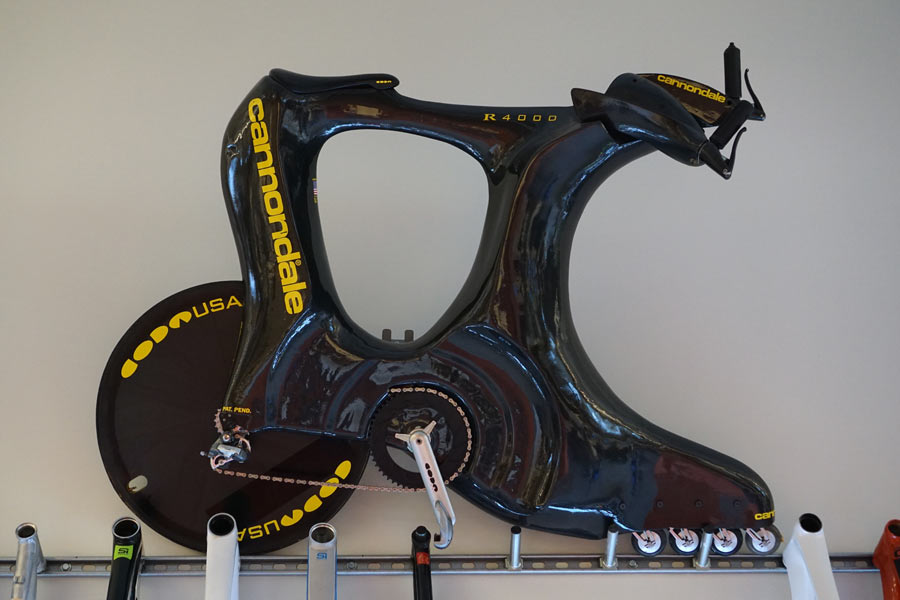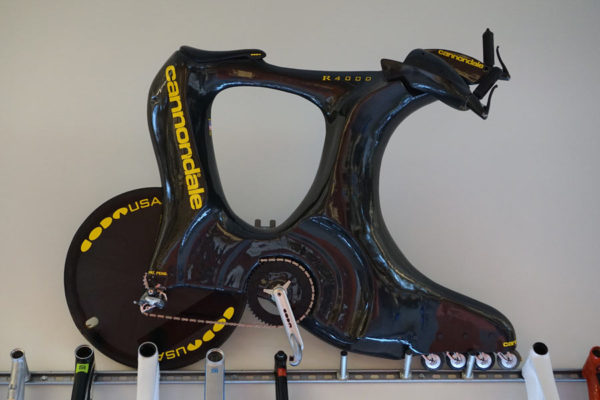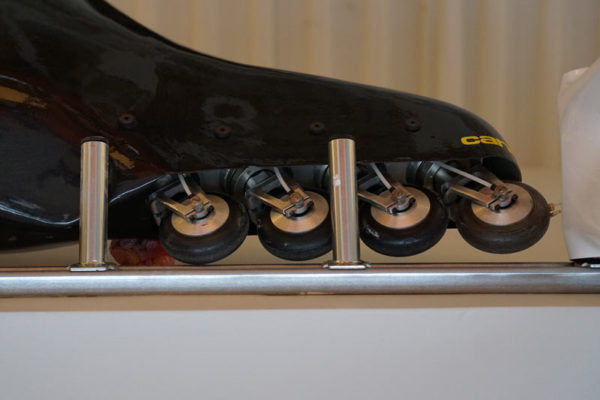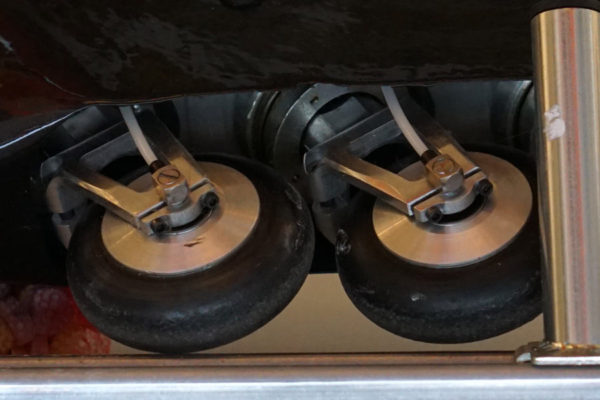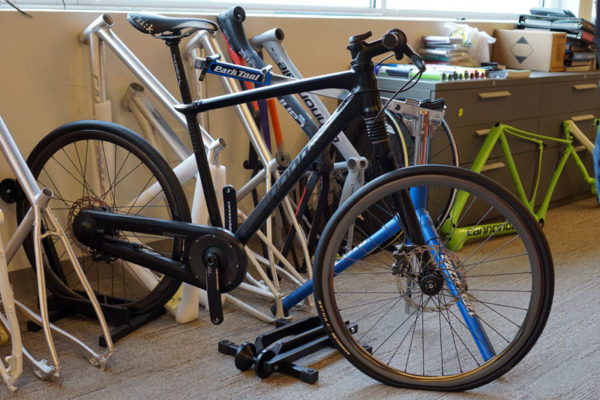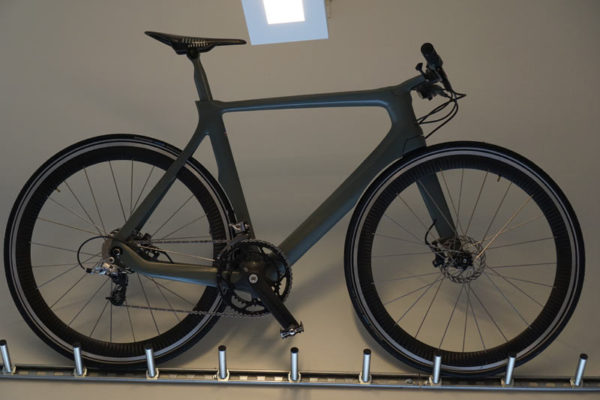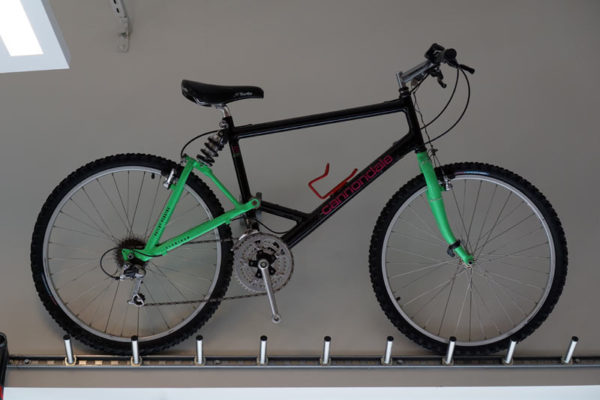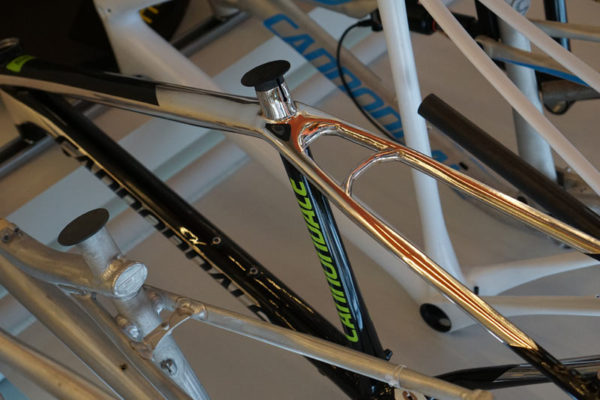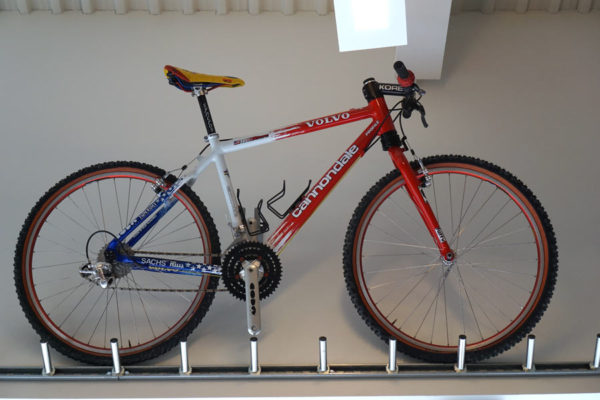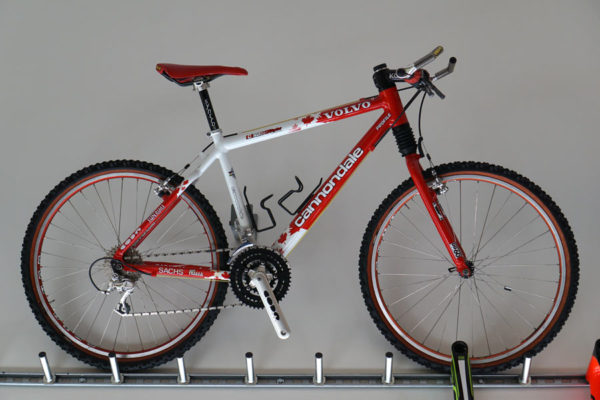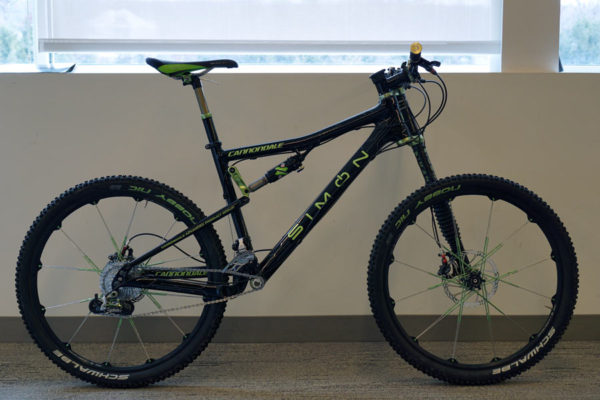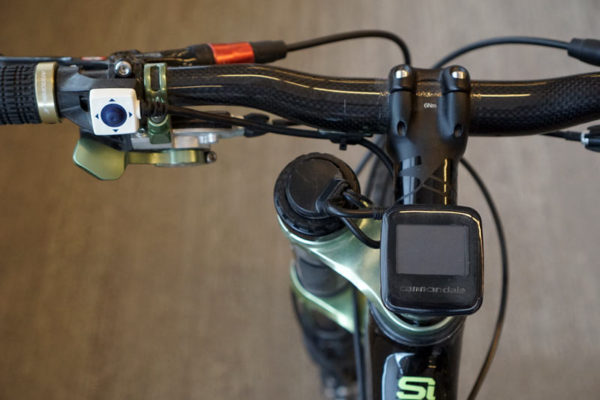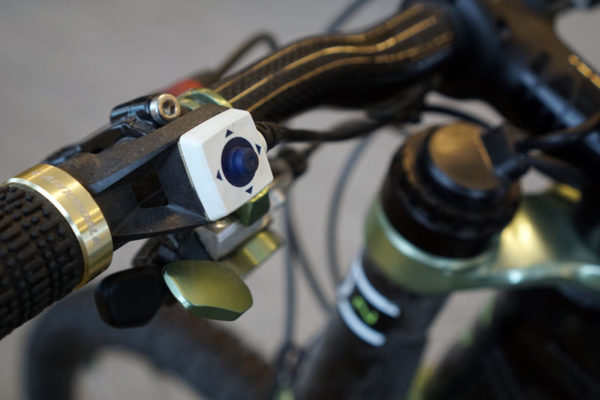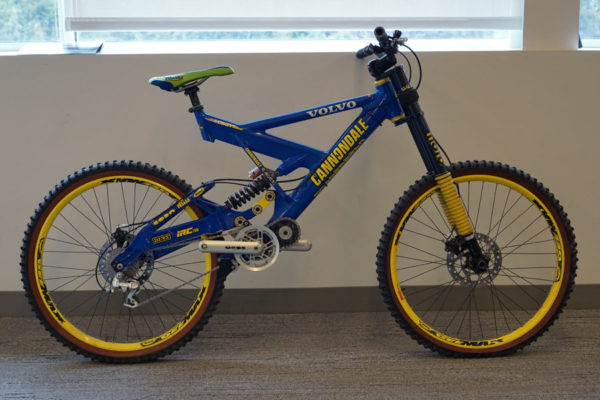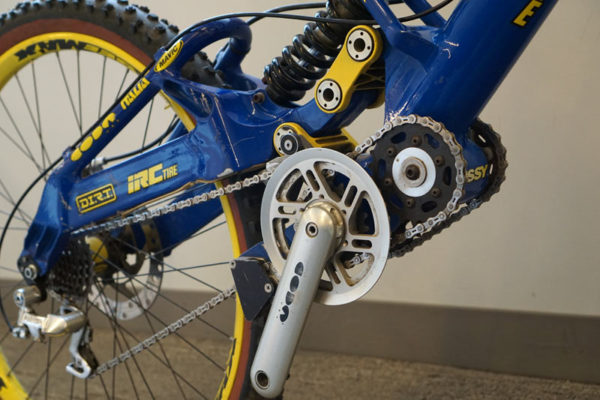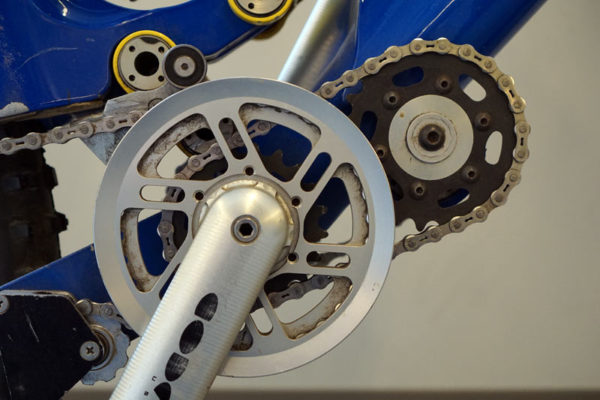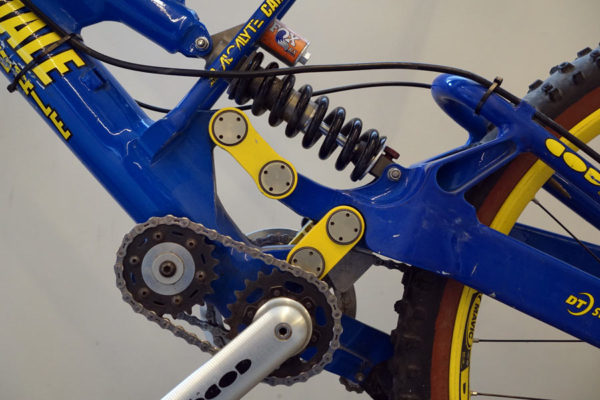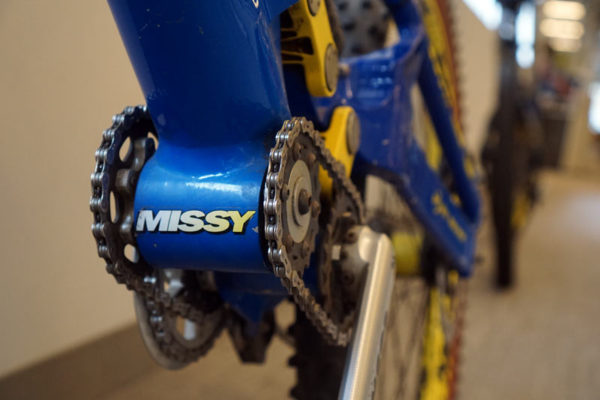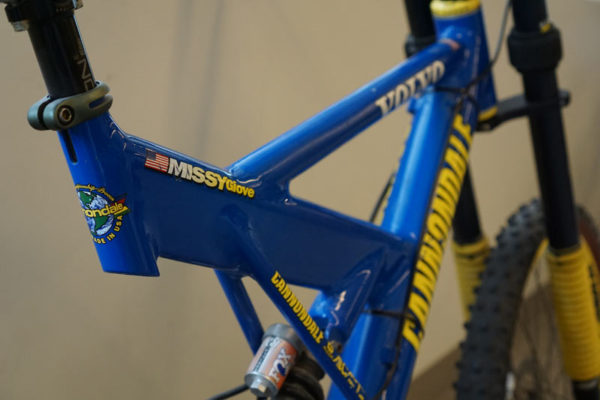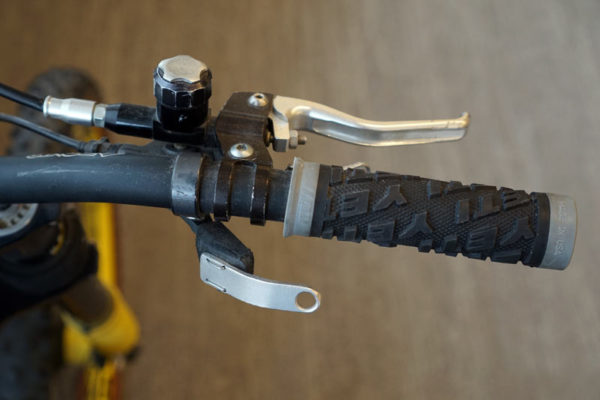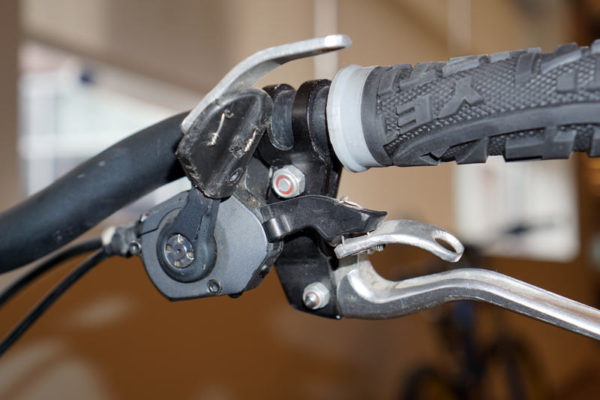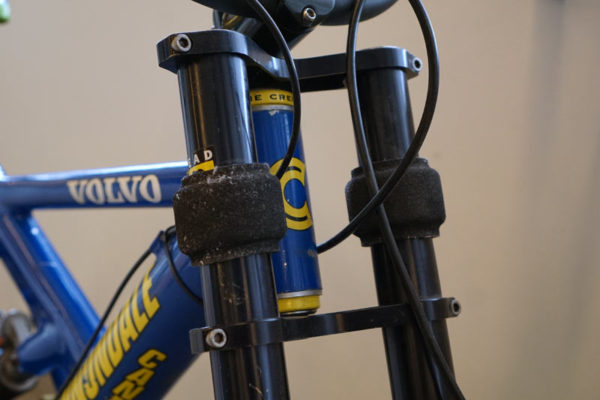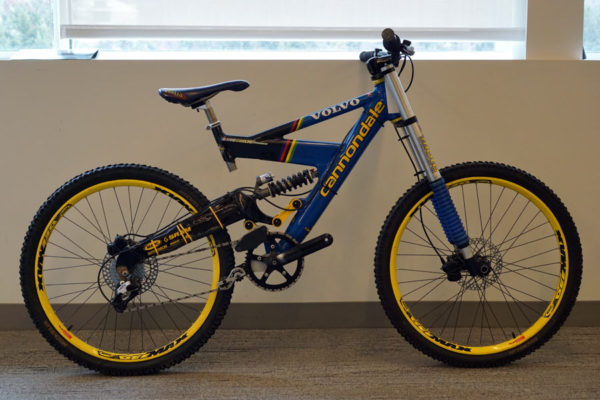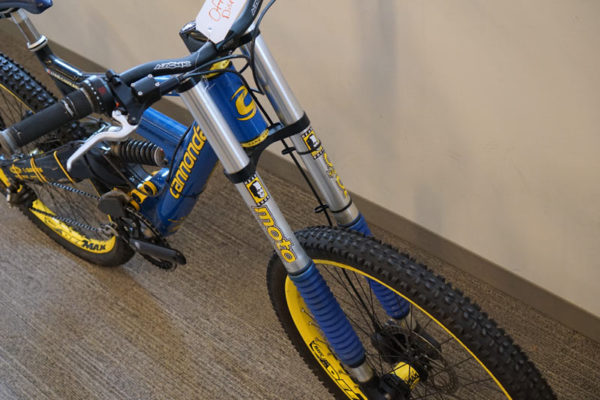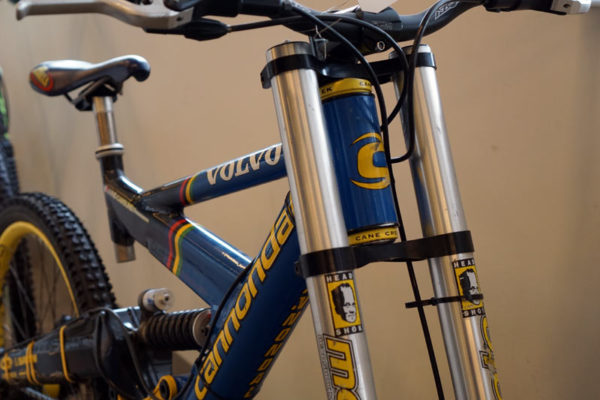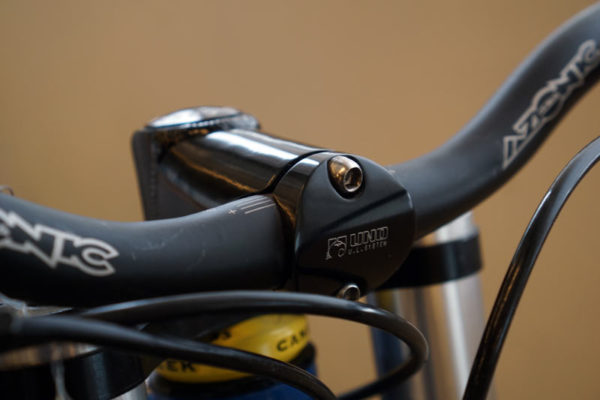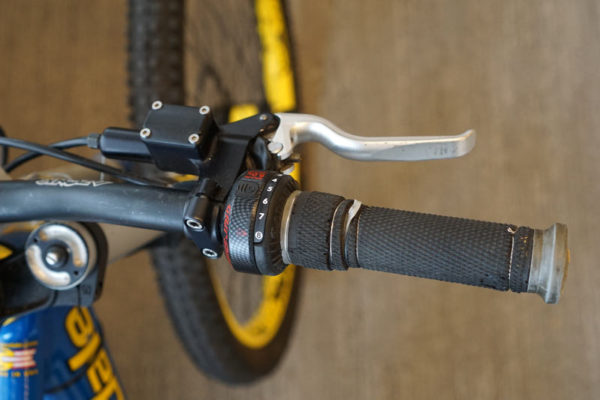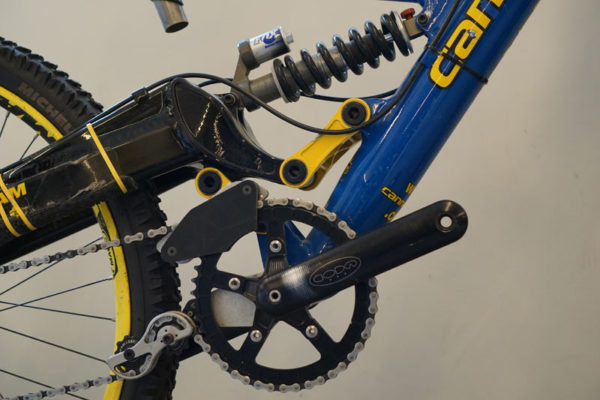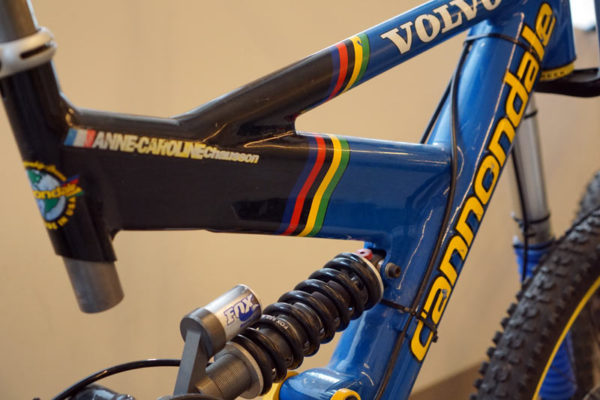When we visited Cannondale’s HQ just before CX Nats, we took a lot of photos of bikes. Prototypes, concepts, team bikes and one-off race rigs. Being a shared office with GT, there were plenty to see from both brands, so we’re splitting them up. Here’s the Cannondales, starting with this insane aero concept with inline skate wheels up front. Naturally, we had to ask, how does it steer?
“In a word – terribly,” according to Cannondale’s living historian (and Director of Product Marketing). “There is a whole series of mechanical cables that run from the articulating armrests to the rollerblade wheels. When you move the armrest, the wheels turn in series to initiate the turn. This was a prototype that sought to increase aerodynamic efficiency by eliminating the big rotating front wheel, but in doing so, it also eliminated a major source of bicycle stability. The only person I ever saw successfully ride this for more than a few meters was champion trials stud, Libor Karas.”
The cables pulling the wheels into a turn pulled each a slightly different amount. Those little hoses going into the axle? One person thought they might have been coolant for the bearings, but the reality is no one really ever rode this long enough or fast enough to need that. They are, as best as anyone can remember, feeding small drum brakes.
This was a limited edition commuter bike with a left-armed Headshok and right-armed drivetrain.
Lefty-style forks make a lot of appearances, and not always with suspension. This was an aero flat bar road bike concept with integrated stem design. Note the wheel cutouts and everything!
Most of the good stuff was made for trails, though. This was one of (if not the) first production full rear suspension mountain bike on the market. The Cannondale EST used a simple single-pivot unified rear triangle. (UPDATE: Per the comments, yes, this is simply a single pivot bike, a URT would have the BB on the rear triangle, too)
Much more modern, this FSi hardtail got a chromed paint that they said was way to expensive to put into production.
OK, OK, so Schwinn isn’t a Cannondale, but these were the only examples laying around. Back in the day, the Straight 8 was a popular DH option. In the background is an air-sprung Super V for Myles Rockwell.
Remember when XC race bikes used to have triple chainrings? This one belonged to Tinker Juarez…
…and this Canadian themed one was Alison Sydor’s race bike.
Remember Simon? This came out shortly after we started Bikerumor and definitely blew some peoples’ minds. We had to ask: Anything new on this “smart suspension” front that Cannondale is working on?
“Sadly, no. Simon, as it was called, was WAAAY ahead of its time and was unbelievably sophisticated, allowing riders to change virtually everything about the shocks performance. You could toggle between different ride modes and travels, so you could go from wide open, “long” travel trail fork feel, to short travel, XC feeling suspension on the fly. And it had a truly dynamic, active platform, meaning the fork’s valving could go from hard lockout, to wide open before the tire even fully deformed around an obstacle. But we found that from a cost and complexity standpoint, it just wasn’t viable, so the program was dropped.”
Settings were controlled with a thumb joystick (above), and accelerometers and sensors at the top and bottom of the fork told the system what you and the ground were doing and adjusted the suspension accordingly.
Check out our coverage from Interbike 2009 to see a video run down and all the tech put into this system…it’s really quite amazing!
Fearless as she might be, Missy “The Missile” Giove had some insane tech helping her pilot the high speed runs she became so famous for. Above, one of the prototype rigs, with this explanation:
“The Fulcrum DH bike was a team-only race prototype that never was intended for production. It was one of the first, possibly the first “virtual pivot” bike out there, and setting the suspension up properly required a consistent chainring size. To solve the issue of how to get different effective chainring sizes while keeping the drive chain engagement point constant, we engineered a ‘jackshaft’ style arrangement. By changing the ratios of the various drive rings, we could get a huge range of effective “chainring” sizes.
“Way too complex for anything other than a full factory team to deal with, it never was meant for production. However, we did use the oversize, HeadShok dimension headtube to create a variable angle headset about 10 years before anyone sold them commercially. And the fork provided a lot of engineering solutions that were used to create the Lefty forks.”
Confused yet?
Here’s how it works: Pedaling forces are driving the left-side chainring, which via the chain drives the ring in front of it. That’s connected to the right side front ring via an axle, which is connected via chain to a smaller chainring rotating around (but not driven by) the crank’s spindle. That smaller right side rear ring is attached to the spider of the bigger chainring you see on the outside (where a normal chainring would be), which drives the chain leading backward to the cassette. If you saw the bike pedaling, the large outer chainring would be rotating faster than the crank arms. Despite this, it would feel normal while pedaling…if you set it all up to replicate a 50-tooth chainring, it would feel like you were pedaling a 50-tooth chainring despite the different rotating speeds.
The point of all this was to allow the rider to change the effective chainring size by varying any of the four smaller rings, but not change the outside diameter of the chainring driving the cassette. Back in these days, downhillers would sometimes run massive chainrings, but this particular suspension design required a fixed tooth count to work properly. It took a team of people intimately familiar with it about an hour to change the effective gear size because a) they had to know what the math was, and b) the chains would have to be retensioned after each adjustment.
For a historical reference point, this bike serves as a fine example of just how much things have changed. Rotors are bigger, brakes now have four pistons, and head angles are way slacker and forks travel further. Tires are a helluva lot bigger, too.
Check out the customized shift paddles!
Missy’s bike paved the way for Anne-Caroline Chausson’s:
From Cannondale: “This is Anne-Caroline Chausson’s Team-only Fulcrum DH bike. It’s the third evolution of the Fulcrum concept that first debuted in ’97. This version eliminated the complex and heavy jackshaft crank system of the earlier versions and featured an evolution of the Moto SuperDownhill HeadShok fork (150mm travel – basically a long HeadShok needle bearing system in each leg).”
The fork legs look a little bigger, but they’re still running a regular stem:
If lock-on grips aren’t available…
Brakes were upgraded to four-piston Coda calipers, but you can still see how things have evolved. These use a closed body; modern calipers have massive openings at the top to vent heat. And those giant holes on the rotor’s braking surface probably didn’t provide anywhere near the friction and stopping power modern riders would expect. Seeing all of this just makes the pros’ performances of yesteryear all the more impressive.
By this point in the bike’s evolution, riders had settled on a fairly small range of chainring sizes, usually within 2-4 teeth of each other for any given course. And cassette range had grown some, too. So, Cannondale was now able to fine tune the linkage lengths to work well enough within the most commonly used chainring sizes and drop about six pounds off the frame by losing the jackshaft system.
Revised tube shaping and a lower gusset removed the need for the support struts of Missy’s bike.
Want more? Stay tuned for the GT bikes in Part 3, going live on Friday!
